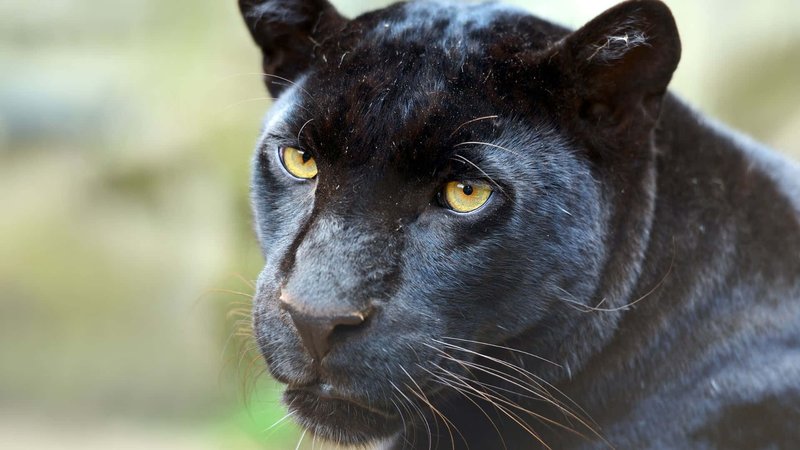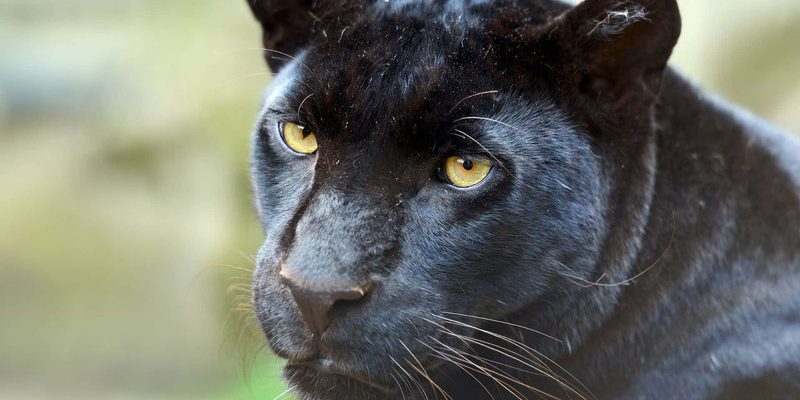
Honestly, the term “panther” can refer to a few different types of big cats, primarily the leopard and the jaguar, both of which can have melanistic (black) color phases. This confusion can lead to misunderstandings about their behavior, habitat, and even their place in the ecosystem. So, let’s dive into some common myths and misconceptions about panthers and get to the truth of the matter.
Myth 1: All Panthers Are Black
Here’s the thing—when you hear “panther,” many people think of a completely black cat. While it’s true that both leopards and jaguars can have a black color phase, not all panthers are black. In fact, they can have a range of beautiful color variations.
- Leopards typically have a golden, spotted coat. The black phase, called melanism, occurs due to genetic variations.
- Jaguars, on the other hand, may appear golden with dark rosettes, but they can also be black due to the same genetic trait.
Understanding this helps clarify that melanism is just one trait of these big cats, not their defining feature. So, if you spot a leopard in the wild that’s not black, don’t be surprised! It’s still a panther.
Myth 2: Panthers Live Only in the Jungle
You might be picturing panthers slinking through thick, tropical jungles when in reality, they can be found in a variety of habitats. Panthers are adaptable animals. They thrive in both dense forests and open grasslands.
Let me explain this further. For example:
– Leopards are known for their ability to climb trees, often taking their prey up high to avoid competition. They can dwell in savannas, scrub forests, and even mountainous regions.
– Jaguars, on the other hand, often prefer wetter environments like rainforests and swamps, but can also be found in dry forests and grasslands.
So while some panthers do enjoy the lush greenery of jungles, they’re also quite versatile and can adapt to other landscapes too.
Myth 3: Panthers Are Solitary Creatures
You might be wondering if panthers are loners because they’re often depicted that way in movies and documentaries. While it’s true that both leopards and jaguars are primarily solitary, that doesn’t mean they avoid social interactions altogether.
Strong family bonds can form, especially between mothers and their cubs. Female leopards, for instance, are nurturing and will raise their young alone. However, once the cubs are grown, they’re on their own, which can create the illusion that panthers are entirely solitary.
Additionally, during mating season, these big cats can be quite social. They might even rub against each other or vocalize to attract a mate. So, while they enjoy their alone time, there’s also room for some socializing in their lives.
Myth 4: Panthers Are Dangerous to Humans
Let’s talk about the fear that surrounds panthers. Many folks believe these cats pose a significant threat to humans. It’s important to highlight that attacks on humans are incredibly rare.
Panthers, like most wild animals, generally prefer to steer clear of humans. They’re more interested in hunting deer or other prey. In fact, there are more incidents involving domesticated animals than humans.
It’s vital to respect their habitat and keep your distance if you ever encounter one. Remember, these majestic creatures are just trying to survive, much like you or me.
Myth 5: Panthers Are Always Active at Night
There’s a popular notion that panthers are strictly nocturnal creatures, prowling only under the cover of darkness. While it’s true that many big cats, including leopards and jaguars, are more active at night, they can also be active during the day.
Some leopards, especially those living near human settlements, adjust their timing to avoid encounters. They might hunt or explore at dawn or dusk, known as crepuscular behavior.
Ultimately, their activity patterns can be influenced by food availability, competition, and human interference. So, while you might catch a glimpse of a panther at night, don’t assume they’re hiding all day.
Myth 6: Panthers Are Just a Single Species
You might think of the panther as a single species, but in reality, panther is a term that can describe several different big cats. As we’ve discussed, it primarily refers to leopards and jaguars, but it may also include the cougar in some regions.
– Leopard (Panthera pardus): Found in Africa and parts of Asia.
– Jaguar (Panthera onca): Mostly seen in the Americas, particularly in the rainforests of Central and South America.
– Cougar (Puma concolor): Often referred to as a mountain lion, they inhabit various landscapes across North America.
Understanding that panther is an umbrella term can help clarify misconceptions and put things in perspective.
Myth 7: Panthers Are Indifferent to Their Environment
Finally, there’s a misconception that panthers don’t care about their surroundings. But in reality, they are highly attuned to their environment. These big cats are skilled hunters and keen observers, adapting their behaviors based on habitat and prey availability.
For instance, jaguars are known to swim and hunt for fish, while leopards might hunt in trees to pursue monkeys. Their understanding of their environment is crucial for their survival.
In essence, they are intelligent animal s that exhibit a deep connection to their habitat.
As we’ve explored, there are plenty of myths and misconceptions about panthers that can lead to misunderstandings about these fascinating big cats. They aren’t just black cats hiding in jungles, nor are they dangerous beasts waiting to pounce on unsuspecting humans. They’re complex creatures, adapted to a variety of environments, and exhibit behaviors that might surprise you.
So, next time you hear someone talk about panthers, you can share the truth—like the fact that they can come in various colors and inhabit many landscapes while only occasionally seeking out social interactions. Understanding these creatures helps us appreciate the beauty and complexity of wildlife, reminding us that every animal, including the panther, plays a vital role in our ecosystem.

